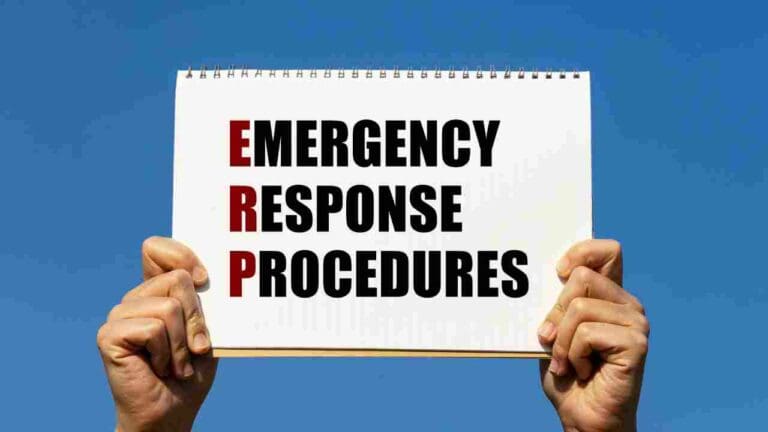It doesn’t matter if it’s a small office space or a large industrial plant, every workplace has its hazards. These can be physical things that increase the risk of injury or illness. They can also be less tangible things that make the environment less safe or negatively impact mental health.
The process of identifying hazards in the workplace is an important first step toward keeping your people safe. To be effective, it requires an ongoing commitment and should involve every member of your team. It also needs to be embedded in the culture of your organisation and supported by robust reporting and management processes.
Why spend time identifying workplace hazards?
Failing to find and manage key hazards increases the risk of workplace injuries and, in extreme circumstances, can even lead to fatalities. It also leaves your business open to heavy fines, costly lawsuits, large compensation claims, and significant reputational damage. In cases of severe negligence, individual business leaders can also be held personally responsible.
Hazard identification and response process
There are many different ways to go about defining and managing workplace hazards, but most approaches boil down to four simple steps:
1. Identify potential sources of harm
A hazard can take many different forms, including:
- Manual tasks and repetitive movements.
- Working in challenging environments, like at heights or in confined spaces.
- Bullying, harassment, and violence.
- Faults and other maintenance issues.
- Insufficient safety management practices.
As such, a range of activities are usually required to get a complete picture of the hazards in your workplace. This could include:
- Asking team members for feedback on any issues they have seen.
- Conducting a physical assessment of all infrastructure and equipment.
- Reviewing processes for handling, transporting, and storing potentially hazardous substances.
- Reviewing start-up processes, maintenance checklists, emergency response procedures, and other safety management documents and strategies.
- Identifying the root causes of recent workplace injuries, near misses, and other safety incidents.
- Reviewing safety training programs, and processes for reporting and responding to safety issues.
2. Assess the level of risk
Once you have identified your workplace hazards, you can begin planning how best to mitigate or manage them. To do this, you should first take a closer look at each issue and analyse its potential impact. As part of this, you should consider:
- Likelihood – how often the hazard could cause harm to your employees and visitors.
- Severity – how much damage would be done to your people and plant if the hazard occurs.
- Complexity – how difficult the hazard will be to eliminate or manage.
When assessing risk levels, most organisations use either a three-point scale (Low, Medium, High) or a rating out of 5 for each criterion. This allows them to compare all of their hazards and prioritise the changes that will make the biggest difference.
3. Implement targeted controls
Whenever possible, you should aim to completely remove a hazard from your workplace. You may be able to do this by upgrading or repairing damaged equipment or outsourcing the handling of dangerous materials. However, this will not always be practical, and some hazards will require ongoing management.
For these hazards, you should use the hierarchy of controls to determine the best way to manage the risk. This model ranks the different types of changes you can make based on their effectiveness:
- Elimination – completely remove the hazard.
- Reduction – limit potential harm by substituting materials or processes, isolating the hazard, or engineering changes.
- Administration – introduce new processes and reporting requirements that limit interaction with a hazard.
- Protection – use personal protective equipment to minimise the potential impact of a hazard.
When determining appropriate control measures, you should work down this list until you find an option that is practical. In some cases, a combination of measures may be the most effective response, however, this should always include the highest-ranked control possible.
4. Review the effectiveness of control measures
Once control measures have been in place for a while, you should check to see if they are working. The best way to do this will depend on the type of hazard and the expected impact of the control measure. Common review activities include:
- Getting feedback from workers directly impacted by the implemented changes.
- Regularly inspecting the condition of infrastructure and equipment.
- Monitoring the volume and severity of reported safety issues.
- Tracking trends in key safety data.
If you find your controls aren’t performing as planned, you will need to make some adjustments. You may also find that the measures you introduced have created new hazards, and you need to rethink your approach or implement further controls.
As hazard identification and management is an ongoing process, it’s worth scheduling regular review sessions. The ideal frequency of these will depend on the nature and complexity of your organisation. During these sessions, you should assess:
- The effectiveness of existing control measures and any adjustments required.
- Recent changes to work processes and any new hazards they create.
- Any new equipment introduced to the workplace and the risks associated.
- Trends in key safety data and any further interventions required to manage them.
Getting your team involved
The leadership of your organisation is crucial to the hazard identification and management process, but they cannot do it alone. Every member of your team has a role to play and needs to be engaged in the discussion.
Team members who perform manual tasks, use equipment, and handle materials every day can provide particularly invaluable insight. They will often have their own ideas on how to improve both safety and operational efficiency. Their significant first-hand experience also means they can advise on whether proposed controls are practical and will have the desired effect.
Involving all team members in the hazard identification process should also help build buy-in for, and reduce resistance to, any resulting changes. This is particularly important as most controls are likely to directly impact your front-line workers.
Need help identifying and managing your workplace hazards?
While identifying hazards in the workplace should be a team effort, a little outside expertise can also be invaluable. GSD Safety specialises in assisting organisations of all sizes to assess their safety risks and implement controls that are practical and effective. Contact us on 1300 473 723 or via our online contact form today to arrange your free WHS assessment.



